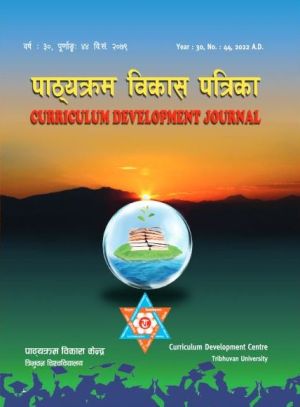Students' and Teachers' Perceptions on Effective Physics Teaching and Learning
DOI:
https://doi.org/10.3126/cdj.v30i44.54972Keywords:
effective teaching, effective learning, institutional secondary school, PerceptionAbstract
This research investigates how secondary school learners as well as teachers perceived effective physics learning and instruction. Consequently, a quantitative survey methodology was adopted for the investigation. Fifty-five students enrolled in grade twelve of two institutional secondary schools in Kathmandu and Lalitpur districts formed the sample size of the study. Seven teachers were enrolled in the study to collect data from two schools. The study was directed by two research questions. Researchers created a questionnaire with a four-point Likert scale as a tool for data collection. Cronbach’s alpha was used to determine the reliability coefficient, which was found to be 0.84 after the instrument had undergone validation. In order to guarantee a 100 percent return, the researcher circulated the surveys via a Google Form and collected them. After the data were analyzed using mean and frequency distribution analysis to answer the research questions, the percentage of students’ and teachers’ responses to each item was calculated and tabulated. Some of the conclusions that were reached include the fact that most students’ comprehension of physics has a weak foundation.
Downloads
Downloads
Published
How to Cite
Issue
Section
License
© Curriculum Development Centre, Tribhuvan University

